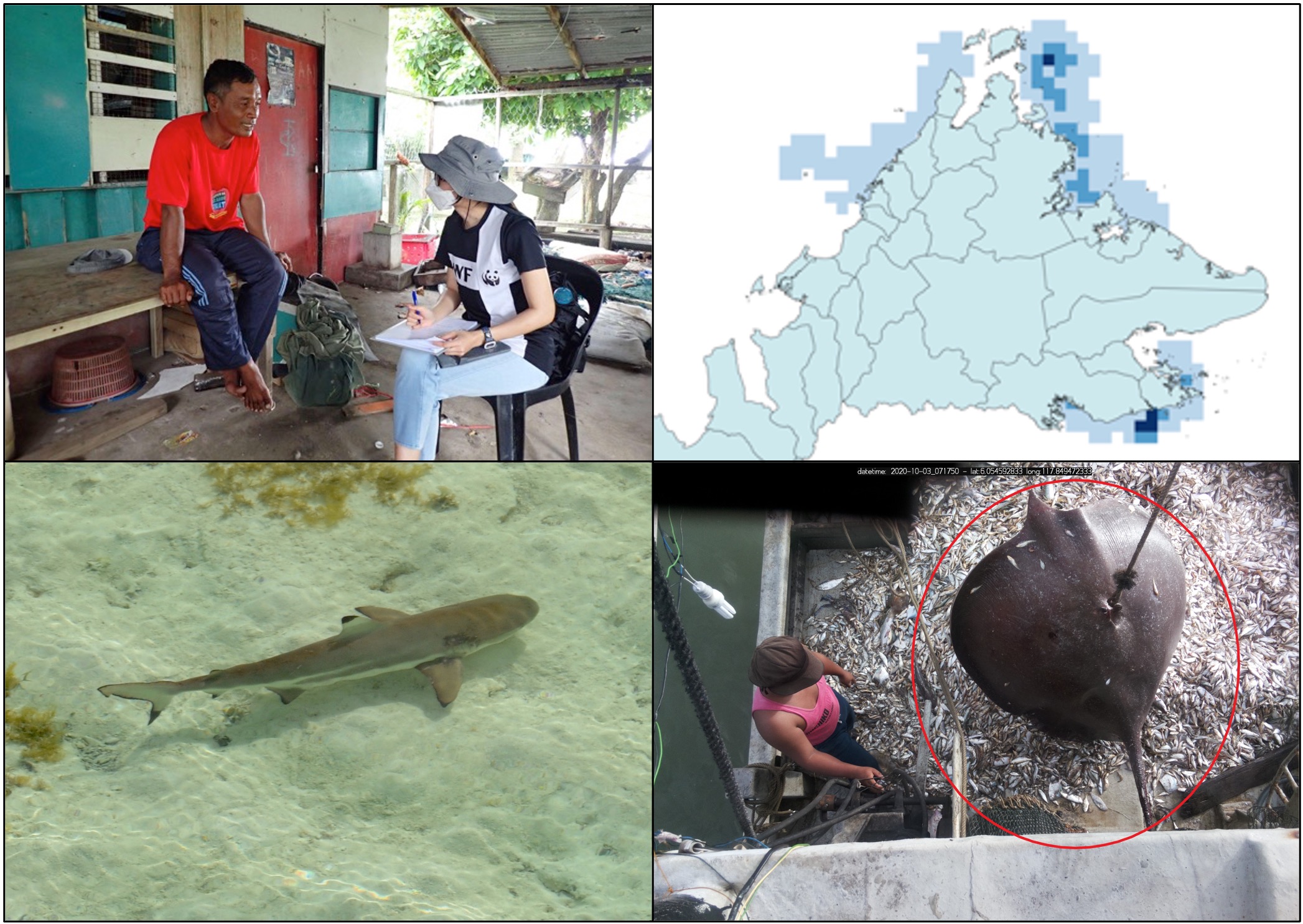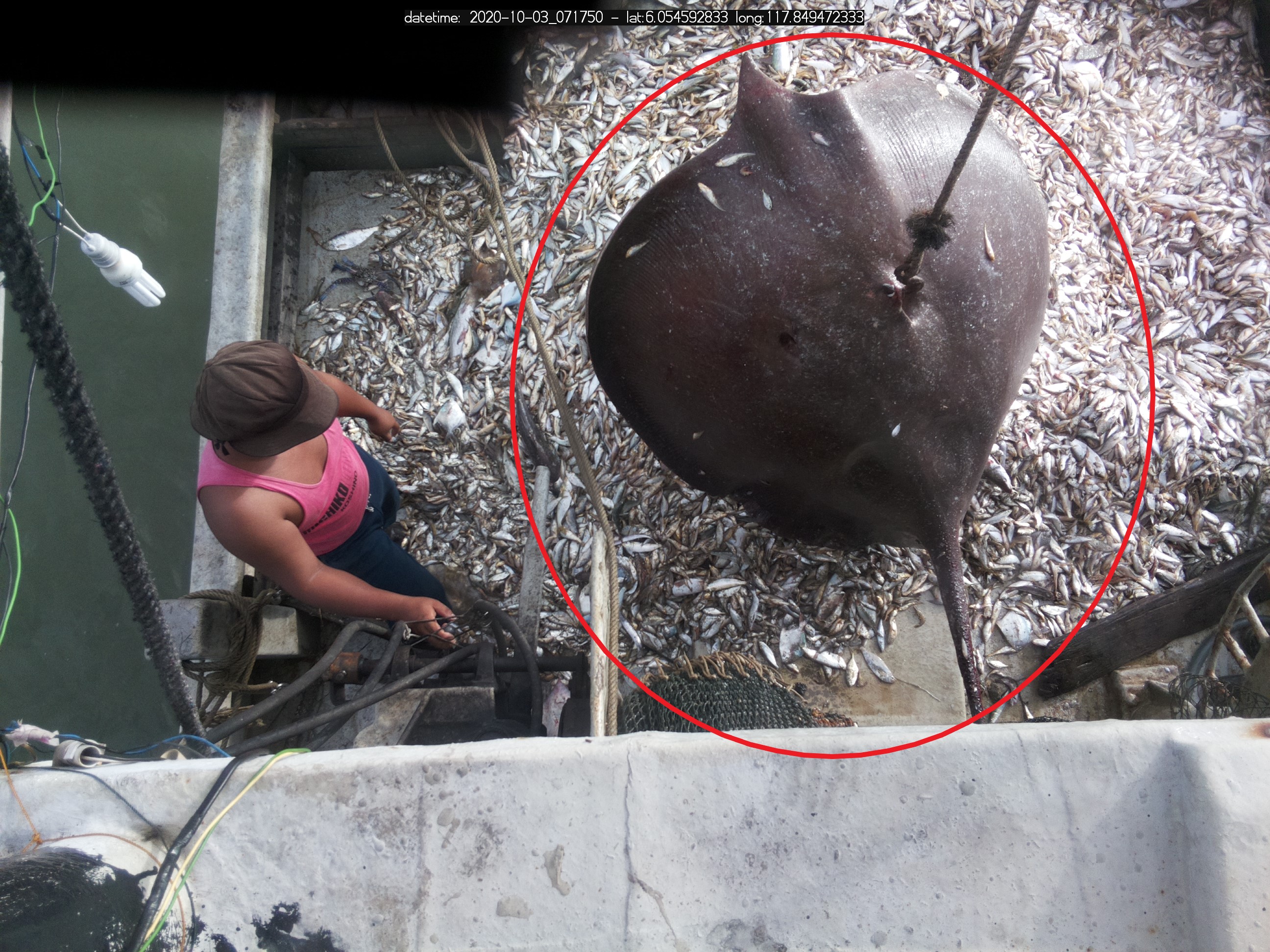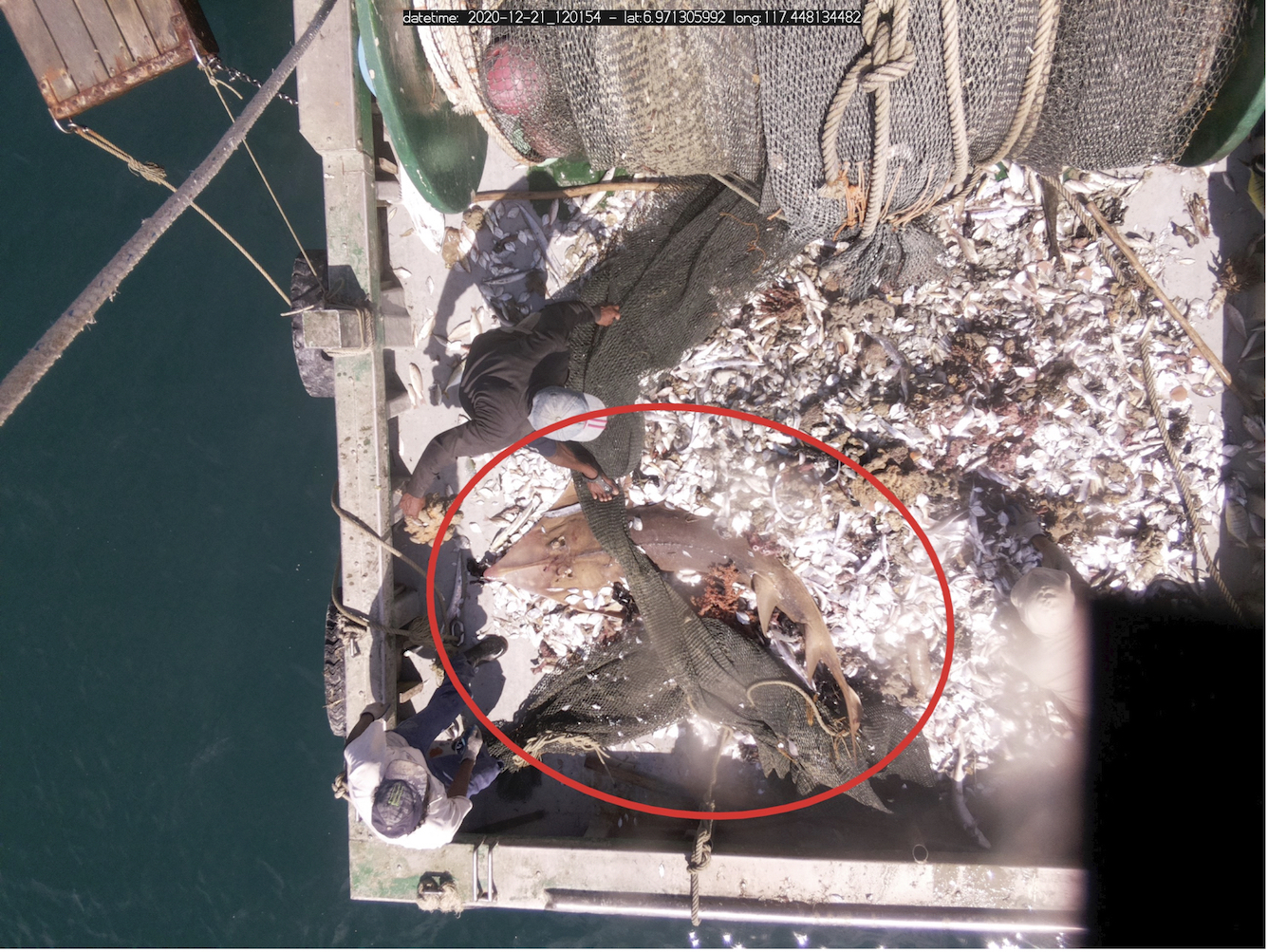The designations employed and the presentation of material on this map do not imply the expression of any opinion whatsoever on the part of IUCN concerning the legal status of any state, city or area or its authorities, or concerning the delimitation of its frontiers or boundaries.
Back




Addressing Shark and Ray Bycatch in Sabah
Contributing IUCN constituents: Marine Research FoundationIUCN Species Survival Commission 2021-2025
Project Details
| Name | Addressing Shark and Ray Bycatch in Sabah |
| Description | Malaysian waters provide important habitat for globally important populations of sharks and rays. There are at least 63 species of sharks and 84 species of rays that receive very little legal protection. There are only ten protected species of sharks and rays, most of which continue to be landed as bycatch in commercial trawl fisheries. Sharks and rays are not an ’official’ targeted fishery, and therefore are not yet accorded the levels of management and protection needed to sustain populations. Captures have led to changes in species composition and abundance, and concerns over drastic population declines. Most small-scale fishers do not report catches, and captures from these fisheries remain unrecorded and unquantified. It is likely therefore that the total shark and ray capture figures are higher than fishery estimates suggest. It is imperative effective conservation measures are implemented to safeguard these populations into the future. Recent efforts point to several opportunities to safeguard key pupping and development grounds for many shark and ray species. MRF’s spatial data has identified areas that could be reasonably managed via Sabah’s Department of Fisheries, and our work aims to introduce more effective spatial management for shark and ray populations and address bycatch in a holistic manner, safeguarding these endangered species into the future. The overall goal of this programme is the provision of safeguarding measures to conserve endangered sharks and rays in Sabah that include spatial management, bycatch reduction, improved knowledge, and greater public participation. In the coming years, we intend to collaborate with the Department of Fisheries to establish Malaysia’s first time-area closed area for trawl vessels, which comprise ~80% of Sabah’s fishery fleet on a trial basis, initiating trials with vessel monitoring systems and a temporary closed fishing area to be determined by Sabah Fisheries and Sabah Parks. |
| Contributing IUCN Constituent | Marine Research FoundationIUCN Species Survival Commission 2021-2025 |
| Start Date | 7/31/2019 |
| End Date | 12/30/2022 |
| Conservation Actions | 1.2. Resource & habitat protection2.1. Site/area management3.1.1. Harvest management4.2. Training4.3. Awareness & communications5.1.2. National level5.2. Policies and regulations6.1. Linked enterprises & livelihood alternatives3.2 Species recovery |
| Needed annual budget | $250,000.00 |
| Total annual budget | $150,000.00 |
| Staff | ♀ 5 | ♂ 1 |
| Beneficiaries | ♀ 50 | ♂ 500 |
Potential reduction of species extinction risk resulting from threat abatement actions
This stacked bar chart represents the relative disaggregation of the selected contribution's total potential opportunity for reducing global species extinction risk through taking actions to abate different threats to species within its boundaries. The percentages refer to the amount of the total opportunity that could potentially be achieved through abating that particular threat.
% Contribution of threats to species extinction
0.96%
Fishing & harvesting aquatic resources
0.99%
Industrial & military effluents
1.79%
Housing & urban areas
4.02%
Storms & flooding
4.76%
Other
5.59%
Fire & fire suppression
11.99%
Wood & pulp plantations
17.60%
Hunting & collecting terrestrial animals
23.00%
Logging & wood harvesting
27.55%
Annual & perennial non-timber crops
Threat type